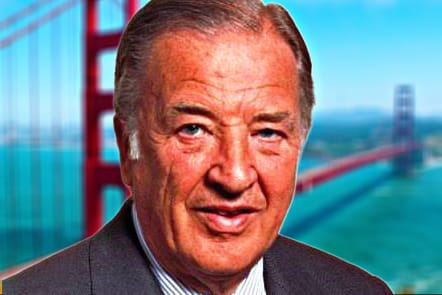Henry Ford II, also known as “Hank the Deuce,” was an influential American businessman who played a crucial role in the transformation and growth of the Ford Motor Company. As the grandson of Henry Ford, the founder of the company, and the son of Edsel Ford, Henry Ford II’s life was deeply intertwined with the fortunes of the iconic automotive giant. His leadership at Ford Motor Company not only shaped the future of the automotive industry but also changed the course of corporate governance in America. In this article, we will explore the life, achievements, leadership, and legacy of Henry Ford II.
Early Life and Education
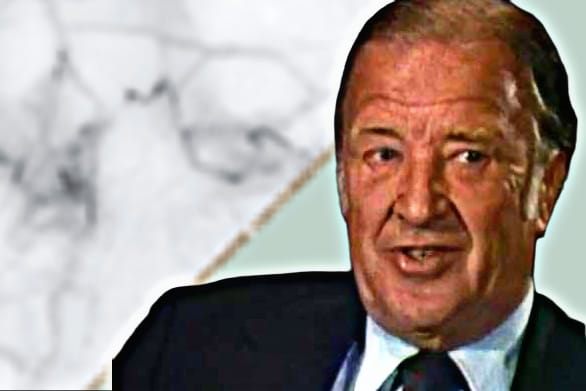
Henry Ford II was born on September 4, 1917, in Detroit, Michigan. He was the eldest son of Edsel Ford, who was the president of the Ford Motor Company at the time. His mother, Eleanor Lowthian Clay, was a wealthy socialite. Growing up in a family with a rich industrial legacy, Henry Ford II was exposed to the inner workings of the Ford Motor Company from an early age. However, his relationship with the company was far from straightforward.
His father, Edsel Ford, was a quiet, introspective man who had difficulty managing the massive enterprise his father had built. Edsel’s leadership style was very different from that of Henry Ford, who was known for his hands-on approach. Edsel’s tenure as president of the Ford Motor Company was marked by significant challenges, and he was often at odds with his father, who had strong, dictatorial control over the company.
Henry Ford II was educated at the prestigious Hotchkiss School in Connecticut before attending Princeton University. He graduated with a degree in economics in 1939. Despite his prestigious education, his entry into the Ford Motor Company was not without its complications. Henry Ford II initially tried to distance himself from the company and briefly worked in the U.S. Navy during World War II.
The Rise to Power
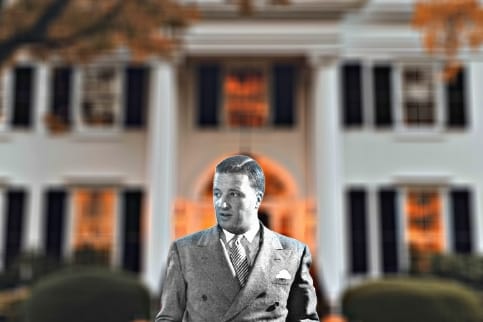
The turning point in Henry Ford II’s life came after the death of his father, Edsel Ford, in 1943. Edsel’s death left a leadership void in the Ford Motor Company, and Henry Ford, Sr., who had been largely absent from the day-to-day operations of the company, decided to step in. Despite his advanced age, Henry Ford, Sr., believed that his grandson, Henry Ford II, was the right person to lead the company into the future. However, Henry Ford II was only 26 years old at the time, inexperienced in running a major corporation, and was thrust into a leadership role that he was not entirely prepared for.
Henry Ford II’s rise to power was not a smooth one. In 1945, Henry Ford II took over as president of the company, and soon after, he assumed the role of CEO. The Ford family’s control of the company was under threat, and the company was in a state of disarray due to years of poor management under his father Edsel and the long-standing interference of Henry Ford, Sr. However, the young Henry Ford II was determined to restore the company to its former glory, and he was ready to make bold decisions.
One of the first steps Henry Ford II took was to reorganize the management structure of the company. He introduced a professional management team to handle the company’s daily operations, many of whom were outsiders with experience in running large corporations. Henry Ford II recognized the importance of professionalizing the company and separating it from the whims of family management. This approach was revolutionary at the time and set the stage for Ford Motor Company’s future success.
Revitalizing Ford Motor Company
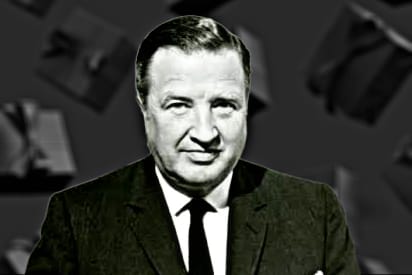
In the years following Henry Ford II’s ascension to power, he made significant changes that helped the Ford Motor Company recover from its struggles. One of the most notable achievements of his early tenure was the company’s post-WWII revival. Ford Motor Company faced stiff competition from both domestic automakers like General Motors and Chrysler, and foreign manufacturers who were quickly gaining market share in the United States.
One of the most important decisions Henry Ford II made was the development and launch of the Ford Mustang in 1964. The Mustang became an instant hit, attracting a new generation of car buyers and giving Ford a significant edge in the increasingly competitive automotive market. The Mustang’s success not only revitalized Ford’s image but also helped solidify Henry Ford II’s reputation as a visionary leader.
Moreover, Ford’s aggressive approach to product development continued with the creation of other iconic models, including the Ford Falcon and the Ford Thunderbird. Henry Ford II’s leadership was instrumental in restoring Ford’s reputation as a powerhouse in the automotive industry. However, his leadership was not without controversy, and many of his decisions were driven by the desire to maintain the Ford family’s control over the company.
Ford and the Corporate World
Under Henry Ford II, Ford Motor Company underwent significant corporate reforms. He embraced the notion of professional management, which had a long-lasting impact on the way corporations were run in the United States. He worked to build a more corporate structure for Ford Motor Company, emphasizing the importance of both business acumen and innovation. The company’s future was no longer tied exclusively to the Ford family, and the role of family members became more symbolic.
Henry Ford II’s influence on the corporate world extended beyond Ford Motor Company. His leadership style, characterized by a no-nonsense approach to management and an emphasis on efficiency, became a model for other executives in the automotive industry and beyond. He understood that to remain competitive, companies needed to evolve with changing times, and he worked tirelessly to ensure that Ford remained on the cutting edge of technological advancements.
The 1960s also marked a period of expansion for Ford Motor Company under Henry Ford II’s leadership. The company acquired several foreign automakers, including the British car manufacturer Jaguar, which was a strategic move aimed at strengthening Ford’s international presence. His push for expansion into overseas markets demonstrated his commitment to making Ford a global player in the automotive industry.
The Ford-GM Rivalry
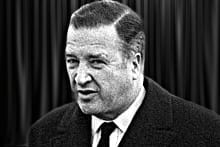
During the 1960s and 1970s, one of the most important challenges for Henry Ford II was the fierce competition between Ford and General Motors (GM). The rivalry between the two automotive giants was emblematic of the broader struggle for dominance in the American car market. While GM was known for its larger and more luxurious vehicles, Ford, under Henry Ford II’s leadership, focused on producing more compact and affordable cars for the everyday consumer.
Ford’s victory in the “Ford vs. GM” battle came with the development of the Ford Mustang, which helped establish Ford as a leader in the “pony car” market. However, Ford’s success in this arena did not come without challenges. GM, with its larger and more established product lines, continued to dominate the automotive landscape in many ways. Henry Ford II’s leadership style and relentless drive to beat GM fueled Ford’s aggressive marketing and innovation efforts.
Controversies and Challenges
While Henry Ford II is widely recognized for his achievements at the helm of Ford Motor Company, his leadership was not without controversy. His management style was often described as dictatorial, and he had a reputation for being tough on employees. Under his leadership, Ford went through several rounds of layoffs and cost-cutting measures aimed at maintaining the company’s profitability.
In the 1970s, Henry Ford II faced mounting challenges, both from within the company and from the broader automotive industry. The oil crisis of the early 1970s and the rise of fuel-efficient foreign cars put immense pressure on Ford to adapt to changing consumer demands. The company struggled to meet the growing demand for smaller, more fuel-efficient vehicles, which led to tensions between Ford’s management and labor unions.
Despite these challenges, Henry Ford II was able to guide Ford through the tumultuous 1970s and 1980s. He made significant strides toward modernizing Ford’s product lineup, introducing vehicles such as the Ford Pinto and the Ford Fiesta. However, his tenure was also marked by criticisms of Ford’s corporate culture, which was often seen as rigid and overly focused on cost-cutting measures.
Legacy and Conclusion
Henry Ford II retired as CEO of Ford Motor Company in 1979, but his influence continued to be felt throughout the industry. His leadership not only helped restore the Ford Motor Company to prominence but also paved the way for future generations of business leaders. Under his guidance, Ford became one of the most powerful and innovative companies in the automotive world.
In addition to his business achievements, Henry Ford II’s philanthropic endeavors and his commitment to corporate responsibility also left a lasting mark. He contributed to various charitable causes and took steps to improve working conditions at Ford plants. His work in reshaping the corporate governance of Ford and the automotive industry as a whole made him one of the most influential business figures of the 20th century.
Henry Ford II passed away on September 29, 1987, at the age of 70. His legacy endures through the ongoing success of Ford Motor Company, which continues to be a major player in the global automotive market. As a leader, innovator, and businessman, Henry Ford II’s contributions to the automotive industry are immeasurable, and his role in shaping the Ford Motor Company’s future cements him as one of the most important figures in American business history.
In conclusion, Henry Ford II was not just the heir to a business empire but a leader who guided the Ford Motor Company through one of the most transformative periods in the history of the automotive industry. His bold decisions, visionary leadership, and corporate reforms helped secure Ford’s place at the top of the automotive world. Today, Henry Ford II is remembered as a titan of industry whose impact continues to resonate across generations of business leaders.

